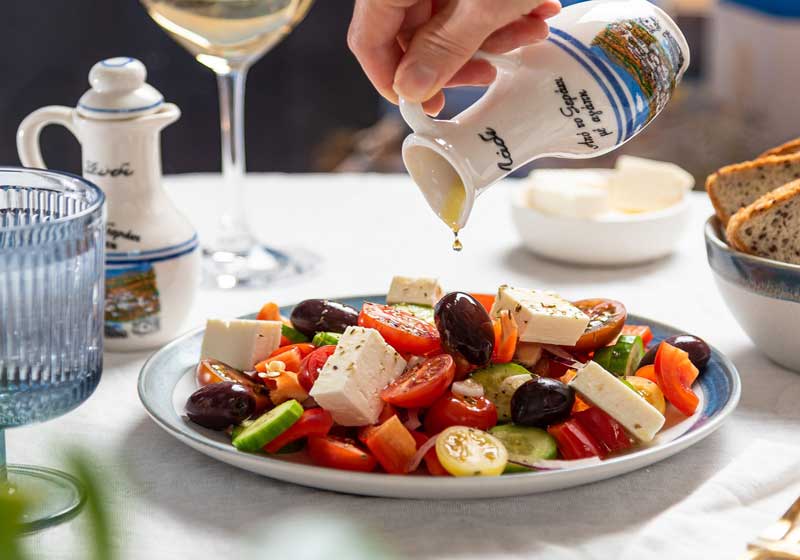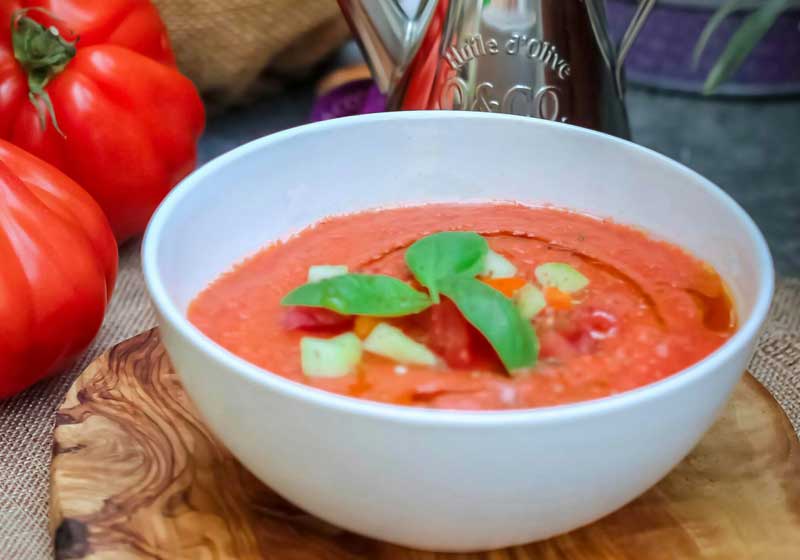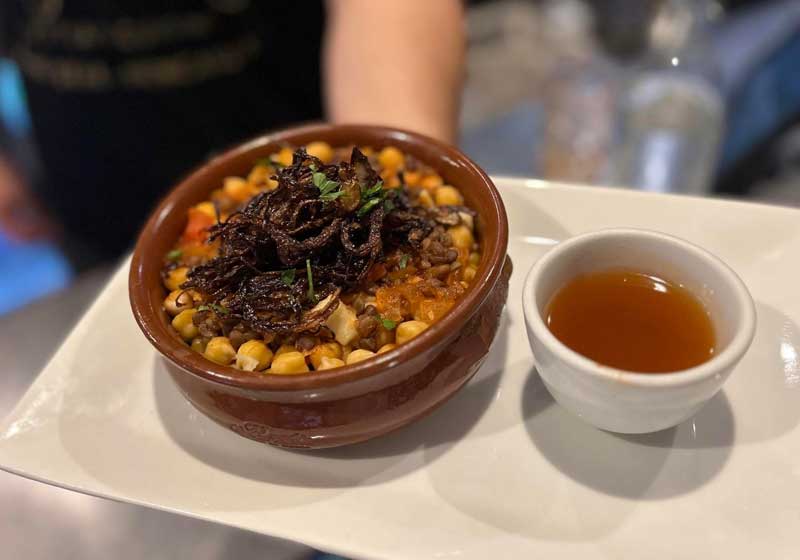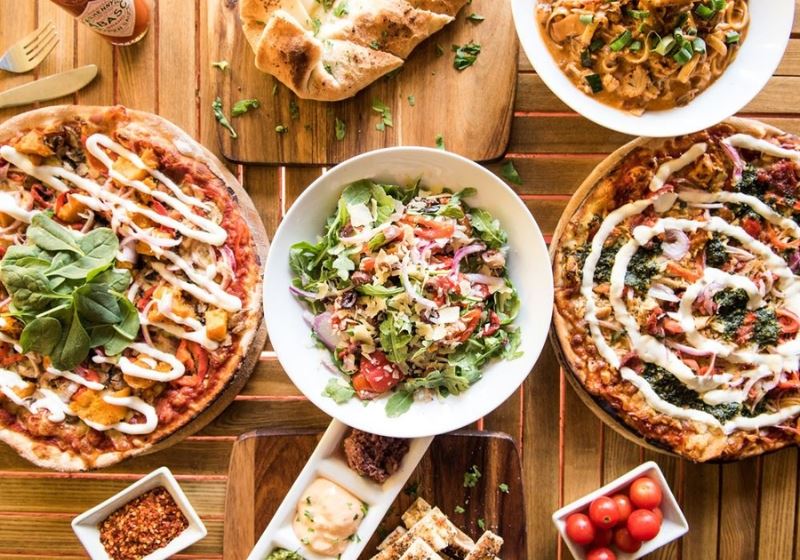By Marie-Antoinette Issa.
When we think of Mediterranean cuisine, succulent steaks and seafood dishes may typically come to mind. A point driven home by the classic quote from 'My Big Fat Greek Wedding’s' Aunt Voula, who iconically responds to her vegetarian guest by saying: "What do you mean he don't eat no meat?...Oh, that's ok, that's ok, I make lamb!”
However, stereotypes aside, amidst the bustling streets and coastal villages of the Med lies a vibrant and diverse array of plant-based dishes that captivate the palate and celebrate the bounty of fresh produce on every plate.

In fact, one of the hallmarks of the region’s cuisine is its emphasis on fresh, seasonal fruit and vegetables which explains the enduring popularity of the Mediterranean Diet. From sweet, sun-ripened tomatoes and crisp cucumbers to oily olives and perfect pulses, these wholesome ingredients are proof that while meat may play a starring role in many traditional dishes, vegetarian options need not necessarily be relegated to simply a support act!
Let’s start with salads
Salads are a staple of Mediterranean cuisine showcasing the region's commitment to simplicity and freshness.

From Hellenic horiatiki salad with its juicy tomatoes, creamy feta cheese and tangy olives to Lebanese fattoush (a refreshing medley of juicy tomatoes, crunchy cucumbers, peppery radishes, parsley and mint, topped with crispy pieces of toasted pita bread and dressed with a tangy vinaigrette made from olive oil, lemon juice, garlic, and sumac) there is no shortage of vibrant and nutritious salads options to start your meal.
A side of soups and stews
Moving beyond salads, Mediterranean cuisine offers a wealth of plant-based soups and stews. An excellent example is gazpacho - a chilled tomato-based soup originating from Spain and often served as a refreshing starter or light meal.
In this dish, ripe tomatoes, capsicum, cucumbers and pungent onions are blended with garlic, olive oil, vinegar and bread to create a smooth and satisfying starter that is typically drizzled with olive oil before serving.

Further south, in Morocco, tagines are also particularly popular, especially vegetable-based varieties, which deliver a slow-simmered stew bursting with veggies such as zucchini, eggplants, potatoes and carrots alongside dried fruits and aromatic spices.
For the complete experience enjoy it alongside fluffy couscous and the iconic local carrot salad infused with aromatic spices and sweet raisins, to deliver an exotic celebration of taste and texture
The cream of the carbs
Pizzas and pasta dishes are practically synonymous with Italy and, any good local trattoria will ensure that a variety of vegetarian versions are available.
From pesto and primavera to spaghetti aglio e olio (featuring a rustic sauce made from garlic, olive oil and red pepper flakes), Italian food is evidence that there are oodles of options for vegetarian noodle lovers.

On the other hand, those who prefer pizza will be pleased to know that the original margherita pizza was actually vegetarian, topped simply with fresh tomatoes, basil and mozzarella cheese to provide a comforting and satisfying meal without the need for meat.
Whichever way to slice (or swirl? it) the popularity of these dishes offers continued proof that you don’t always have to order a salami-stacked slice, or lamb ragu to enjoy the comfort of carbs.
Rice-ing to the occasion
From Italian risotto and spanakorizo (a rice-based version of the comparably named Greek dish made with spinach, herbs, lemon and dill), to Turkish dolma and gemista, any good Mediterranean menu will offer an array of rice-based dishes that are both hearty and satisfying.
Plus, with the rise of vegetarianism continuing, even some traditional meat-based rice dishes - such as Spanish paella, where the savoury saffron-infused rice is often cooked in fish stock and topped with seafood - is now being offered as a vegetarian variety.
Going against the grain
Finally, legume-based dishes that rely on lentils, pulses and beans are proof that eating a plant-based Mediterranean diet isn’t only possible, but actually delicious!

Excellent examples include Lebanese mujadara, a comforting dish of lentils and rice topped with caramelised onions; or koshari - a similar-ish Egyptian street food dish that combines rice, lentils and macaroni noodles, tops them with a spiced tomato sauce and crispy fried onions and typically serves them with a side of chickpeas flavoured with cumin, chili powder, vinegar and garlic.
Finally, despite the name (kofta traditionally refers to meat patties in the Middle East), Turkish mercimek koftesi, are red lentil and bulgur patties that are shaped into small balls, then served cold or at room temperature as a mezze dish.
While many of these meals were often born out of necessity - with meat both expensive and scarce in traditional villages - they continue to spotlight plant power and the magic of vegetarian Mediterranean food.








